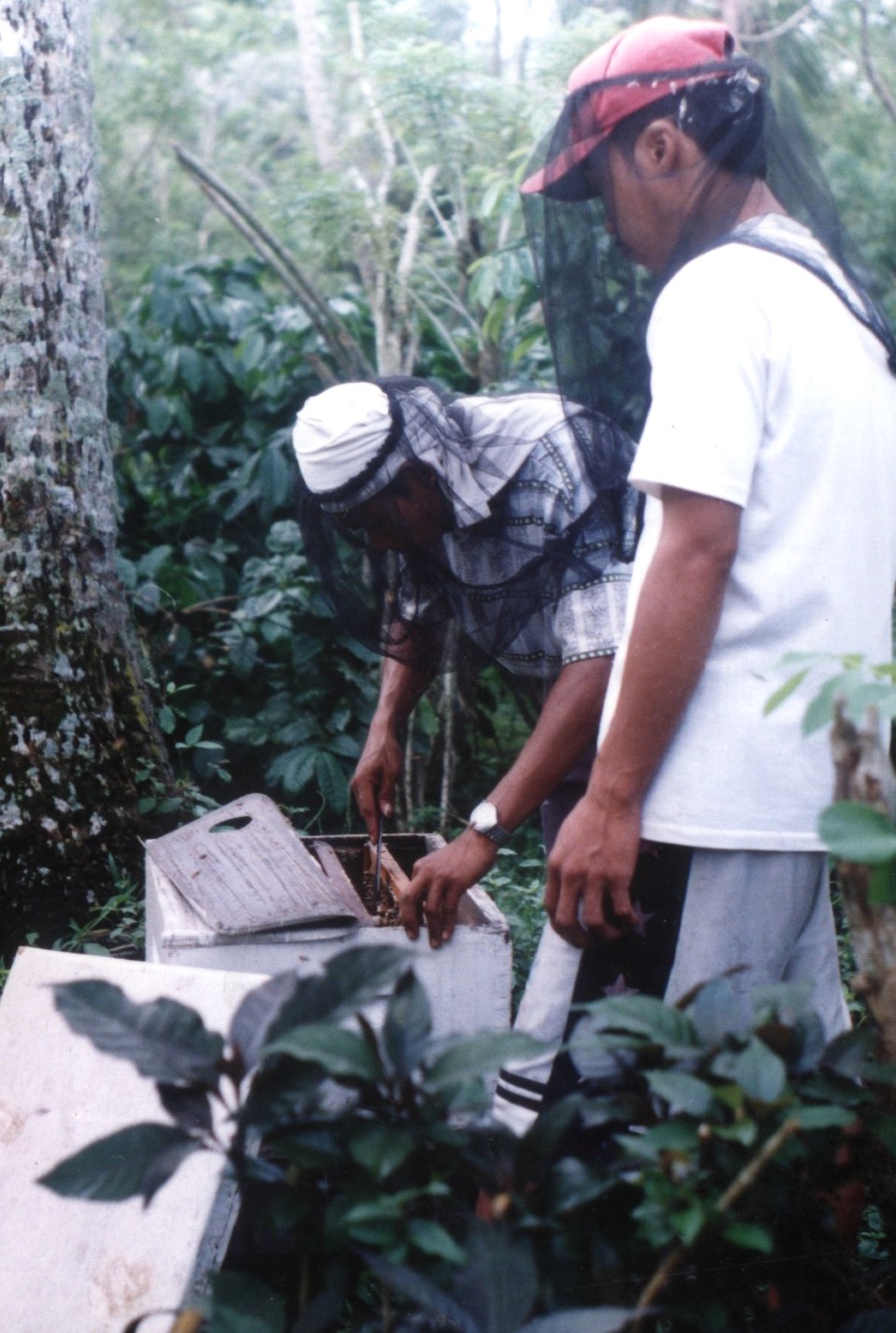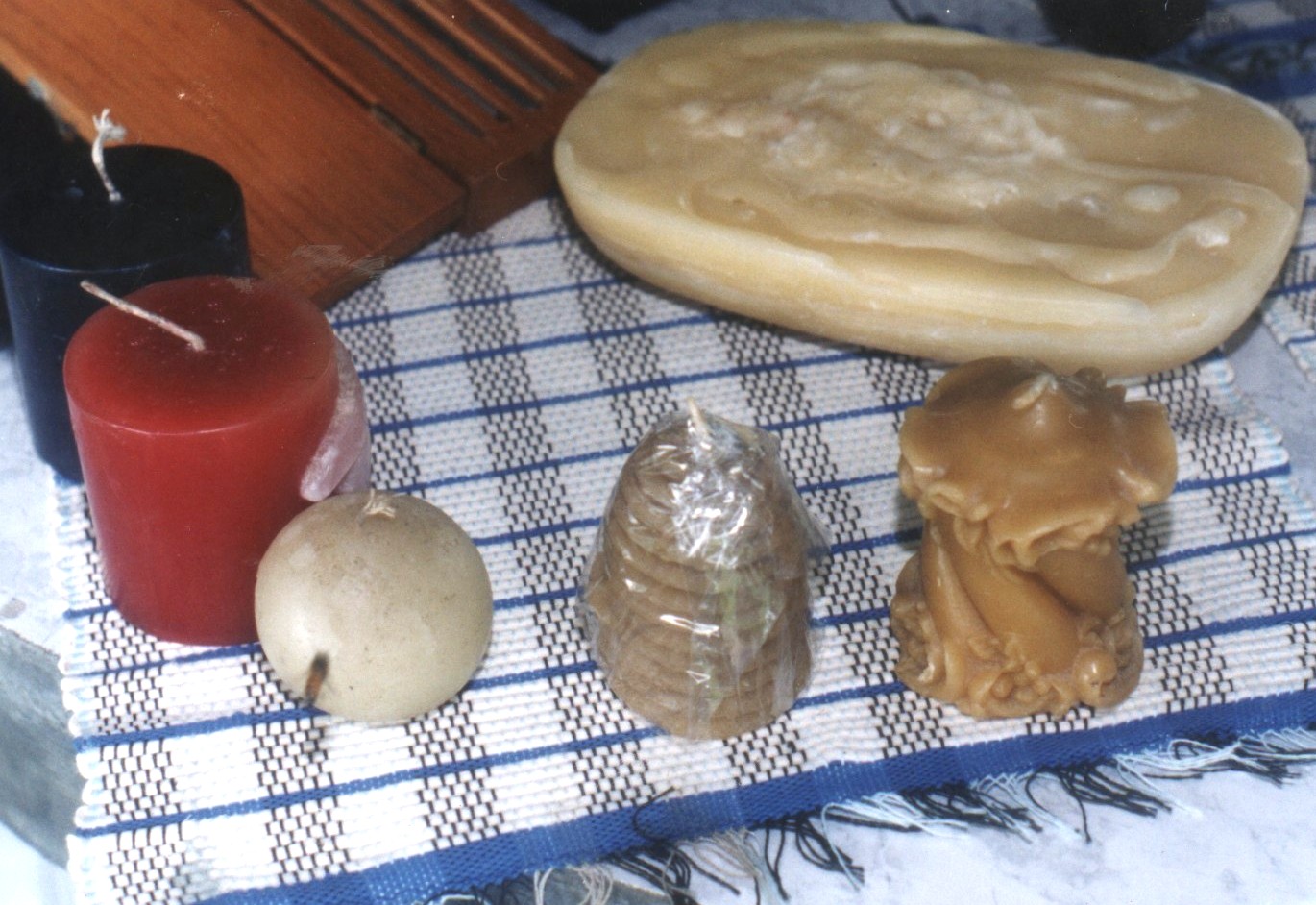Text and Photos by Henrylito D. Tacio
Raising honeybees is a profitable business in urban and rural areas. Bees, after all, are important for the honey and wax that they produce and for the fertilization of flowers.
Some crops depend on insects for pollination to be fruitful and to produce seeds. In many countries, honeybees, which can multiply easily, are moved from one place to another as they are needed for pollination. Beekeeping attracts all classes of people who keep these insects as a hobby and as an occupation or part-time work.
Honeybees from Europe, North America, and Australia have been brought to the Philippines repeatedly in the present century. But it was more likely the Spaniards introduced beekeeping in the country. When Americans came, they introduced it as a hobby.
Years later, Filipino-Chinese ventured into beekeeping using foreign honeybees (Apis millefera) but still with little success. So, they decided to raise the indigenous species Apis cerena, locally known as “laywan” in Tagalog and “ligwan” in Bisaya.
The local beekeepers used the techniques in raising the Apis mellifera due to limited literature available for the indigenous species. The hitch was: the foreign honeybees are bigger than the indigenous species.
“Native honeybees are very aggressive, prolific swarmers, and abscond easily,” wrote Antonio D. Baconawa, author of A guide to beekeeping in the Philippines. “They store little surplus honey (about one to ten kilograms of honey per colony), and have few worker bees (maximum of 10,000).”
In contrast, “Apis mellifera is less aggressive, swarms slowly, stores up surplus honey (20-100 kilograms) and keeps up to 60,000 worker bees in one colony.”
It wasn’t until in the 1970s that beekeeping became a fad, and more people became interested in it.
Right now, beekeeping is described as a “thriving industry” as it perfectly matches the natural landscape of the country. Honeybees are raised in the backyards of those living in Metro Manila and in the farms in Cavite, Batangas, Laguna, Quezon, and in the Visayas and as far as Davao in Mindanao.
According to the Bureau of Agricultural Research, the annual honey production in the country ranges from 50 to 110 metric tons amounting to P21.8 million. The average annual yield per colony is about 0.022 metric tons.
There’s money in beekeeping. That was what Alexis Dela Cuesta found out. He started urban beekeeping in 2019 when he bought two colonies for P8,500 each (around 20,000 bees in total).
In a Smart Parenting feature, Dela Cuesta disclosed: If you invest P15,000 for a bee colony, including the tools and basic equipment, you can earn around P36,000 per honey flow season. This is on the assumption of harvesting 30 kilograms of pure honey per colony, and the selling price is P1,200 per kilogram.
For two bee colonies, a beekeeper can earn between P70,000 to P80,000.
This author came to know about beekeeping through the late Joel F. Magsaysay, an engineering executive of SGV who quit his job and decided to become a full-fledged farmer. “Beekeeping is a profitable venture in the Philippines, because of the country’s mild climate and lush vegetation,” he told us.

According to Magsaysay, beekeeping technology is fairly simple once you get to know the basic bee behavior and the flowering seasons in your area. “After only six to 12 months, you can start harvesting honey,” said Magsaysay, whose Ilog Maria Bee Farm is located a few kilometers away from the town of Silang, Cavite. “When you start harvesting, the maintenance cost would already be minimal.”
He said that a novice in beekeeping could recoup his initial investment through sales of honey. Honey – sweet, thick, supersaturated sugar solution – is a good alternative for cane sugar.
Produced by honeybees from the nectar of flowers, honey is highly nutritive. It is also very good for sweetening cakes, confections, and beverages such as coffee, tea, and lemonade. Honey is highly digestible.
Aside from honey, beekeepers can also collect pollen from honeybees. Pollen is the vegetable equivalent of the semen of animals. As such, it contains a wealth of nutrients of every kind, which are needed in order to provide the “building blocks of life” to the ovum that will it will fertilize. Bee pollen is special because instinctively and carefully select only the best, purest, and freshest flowers from which to gather it.
Collecting bee pollen could be quite a profitable venture, too. In fact, Magsaysay believed the Philippines has the potential of becoming the “pollen capital” of the world. The Scandinavian countries, which are one of the main sources of pollen, have snow, and therefore no pollen could be collected during winter times.
“Aside from our favorable weather, another big advantage we have is that we have one of the richest and most varied flora in the world – an inexhaustible, natural pollen gathering ground for bees,” Magsaysay said.
Other products from honeybees are propolis, royal jelly, beeswax, and bee venom. Propolis, a sticky material which plugs the holes of the beehive, contains a chemical that can be used as anesthetic. Royal jelly is a creamy liquid produced by the glands of the honeybees. Beeswax, a product of young honeybee workers, can be used as a waterproofing agent in leather and cotton strings, in making candles, and in hair and skin ointments.
Bee venom has some therapeutic values. It contains elements that have been proven effective in relieving inflammation, resisting rheumatism, treating radiation illness, and in reducing cholesterol.
Like any other venture, beekeeping has its drawbacks. Bad weather, for instance, can affect the nectar flow and the bee colony’s growth. The bees have their enemies, just like most animals. And, yes, people fear bee stings.
Because of these perceived disadvantages, not too many Filipinos have gone into beekeeping. “I started literally from scratch,” Magsaysay said.
He found that the best honeybees to culture in the country are the Apis mellifera. “I developed a technology that allowed me to build and develop a major beekeeping operation,” he says.
So, you want to go into beekeeping?
A book published by the Department of Environment and Natural Resources (DENR) – Sustainable Livelihood Options for the Philippines – suggests that you have to consider the following requirements before doing so: near an access road to facilitate transportation of the products; be free from polluted water and high use of pesticides; must have enough windbreaks as protection during typhoon season because bees tend to swarm in high wind; must have an abundant number of pollen and nectar-producing plants within 3-8 kilometer radius.
Trees that are good in producing nectar and pollen include the following: coconut, coffee, kakawate, banaba, rain tree, narra, yemane, fire tree, molave, ilang-ilang, and mulberry. As for fruit trees, the following are good sources: mango, kamias, guava, tamarind, balimbing, and bignay.
These agricultural crops are identified as good sources of nectar and pollen: kadios, mungbean, squash, chayote, tomato, sweet potato, patani, corn, radish, malunggay, watermelon, peanut, pechay, and upo.
The DENR publication advises that you must buy bee colonies only from existing beekeepers. “Ensure that the nucleus colony is composed of the laying queen, several adult workers, and worker brood in all stages of development,” it suggests.
In addition, do not start a beekeeping project with incomplete beekeeping equipment and with less than two colonies. The tools and materials needed are a hive with frames, a hive tool, a bee veil and hat, a bee brush, a smoker, a honey extractor, and thick leather gloves.
Magsaysay said a neophyte in beekeeping can produce 20-25 kilograms of honey per colony. “The more experienced beekeepers can regularly harvest 30 to 40 kilograms of honey per colony,” he said.
On harvesting, Magsaysay recommended that it should coincide with the pollen and honey flow seasons. “The foundation of successful beekeeping in the country is the construction of a floral calendar particular to the area in which you will keep bees,” he said.


Elaborating, he added, “There are periods in the year when plants and trees bloom profusely, providing an overabundance of nectar and pollen as bee forage. In Western Luzon, for instance, there is a surplus of pollen flow from September to December. This is called the brooding-rearing season. The surplus of nectar sources is called the honey flow season.”
By the way, among the challenges that beekeeping faces are bee colony decline, absconding and swarming, honeybee pests, and lack of training and extension. If beekeeping has to be sustained and move to the next level, these challenges have to be resolved.
Apiculture, the science of beekeeping, is an ancient art. It is believed to have originated in the Middle East. Eva Crane’s The Archaeology of Beekeeping states that humans began hunting for honey at least 10,000 years ago. Pliny the Elder devotes considerable space in his book Naturalis Historia to the bee and honey and its many uses.
The early Egyptians kept bees and traded for honey and beeswax along the East African coast several thousand years ago. When Julius Caesar conquered Britain, he found the aborigines keeping bees, even making their fermented liquors from a mixture of honey and crushed wheat.

